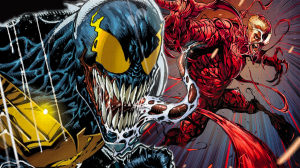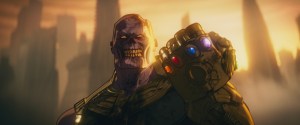
The original Marvel Zombies series debuted back in 2005 and, in the nearly 15 years since, the landscapes of comics and the zombie genre have been altered drastically. Even before the undead ghouls earned a major comeback in pop culture, that initial series was a big hit for Marvel, earning a number of sequels, spin-offs, and even crossovers with another publisher, yet these follow-ups failed to catch readers’ excitement as strongly as the original. With the arrival of Halloween, Marvel was once again tasked with finding a new take on the redundant formula, with Marvel Zombies: Resurrection #1 accomplishing the seemingly impossible in setting the stage for an unsettling narrative that doesn’t rely on shocking, graphic imagery for success.
Videos by ComicBook.com
The Illuminati have convened in response to a bizarre message sent by Captain Marvel, with their research into the message potentially confirming something unexpected: the death of Galactus. Needing to confirm the theories in person, while also understanding the potential risks, the Avengers, Fantastic Four, and X-Men all travel to the location of the “body,” only to realize the full extent of the threat they’re facing.
The first Marvel Zombies series didn’t have to do much to become a hit, merely settling for depictions of iconic heroes suffering all manner of decay and destruction at the hands of a zombie infection. Seeing beloved heroes juxtaposed with horrifying subject matter made for an entertaining gimmick, one which couldn’t be sustained over more than a dozen follow-on series, but writer Phillip Kennedy Johnson and artist Leonard Kirk might finally be giving us a narrative worthy of this title, conveying what really makes zombie lore so horrific.
As evidenced by the inaugural series, written by Robert Kirkman before The Walking Dead became a global phenomenon, the key to an effective Marvel Zombies is more about seeing the characters you loved were never safe and could be twisted into something otherworldly than merely shocking the reader. The same is true in any zombie film, that the fear of literal monsters might be enough to instill horror in the audience, yet stories in which those closest to you could become instantly, irredeemably corrupted by zombification are far more effective.
Throughout much of the book, Johnson delivers readers the spirit of all of these beloved characters and their engaging banter. Just because they’re on a mission to see if Galactus is really dead doesn’t mean that Johnny Storm and Ben Grimm won’t be teasing the rest of the team or that Wolverine will curtail his ego and make sensible decisions. This means that, when the terrifying tide starts to turn, we have to accept that these beloved characters are too far gone to return to their core characteristics and, while they might be “dead,” it’s actually a fate much worse as they are now capable of spreading that infection to other heroes.
While other iterations of Marvel Zombies have picked up with the infection having already occurred, by putting us closer to the origin of the apocalyptic event, we are subjected to witnessing the most depressing parts of the scenario unfold in real time, each new victim bringing an emotional toll with them. Rather than having to accept the new status quo of the widespread devastation, we are subjected to each new infection and each new emotional realization from other characters at to what has happened to their teammate, friend, or family member.
Much like Johnson knows what makes for a more effective zombie story, Kirk knows what makes the aesthetics of such ghouls so disturbing. Dozens of issues of previous series have conveyed all manner of carnage and mayhem, delivering visuals that are gory and gruesome. Kirk instead depicts the characters with a very specific look in their eyes that lacks any humanity. That’s not to say there aren’t a number of striking visuals in the book, but we don’t need to see Captain America’s brain falling out of his head to be shocked when an image of a character who began the book as a hero becomes a ghoul by the book’s conclusion, teasing that death is only the beginning.
Paving a new approach to the lore, setting the stage for exciting developments, and delivering compelling imagery, Marvel Zombies: Resurrection could become the most effective incarnation of the series since its debut. Though, at its heart, we know it’s likely going to lead to the same destination that so many of its predecessors arrived at, no matter how entertaining the journey might be.
Published by Marvel Comics
On October 30, 2019
Written by Phillip Kennedy Johnson
Art by Leonard Kirk
Letters by Travis Lanham
Cover by In-Hyuk Lee





